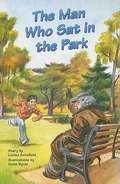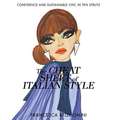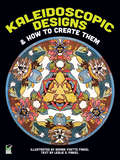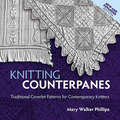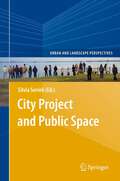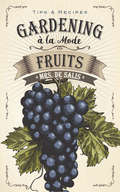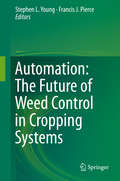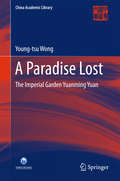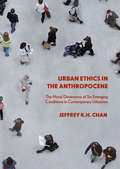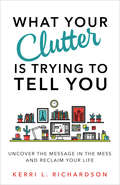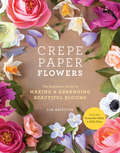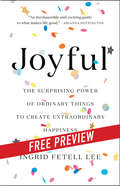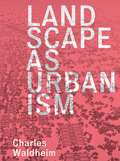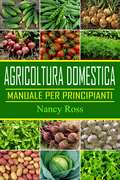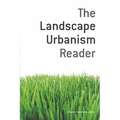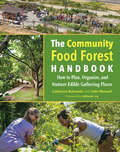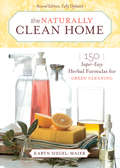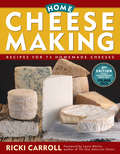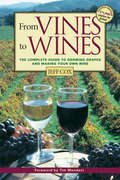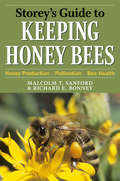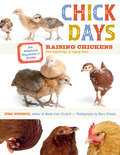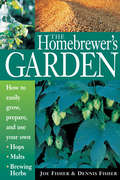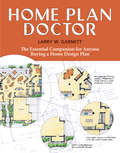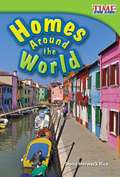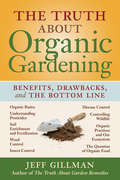- Table View
- List View
The Man Who Sat in the Park (Rigby PM Plus Non Fiction Ruby (Levels 27-28), Fountas & Pinnell Select Collections Grade 3 Level Q)
by Louise Schofield Suzie ByrneBradley becomes friendly with Stan, an old homeless man in the park. Bradley volunteers to help at the men’s shelter and finds out more about his new friend. Stan makes Bradley a paper boat to sail in the park pond. One day, Stan doesn’t show up in the park and Bradley discovers he has been taken to hospital. When Stan dies, Bradley’s parents give him a model boat to remind him of his friend.
The Cheat Sheet of Italian Style: Confidence And Sustainable Chic In Ten Struts
by Francesca BelluominiThe reader is catapulted into a life of rousing style filled with carefully-crafted clothing, summer holidays in the Italian countryside, the aroma of fresh tomato sauce simmering in the kitchen, and fresh lavender escaping from grandma's armoire. It transports into a world of desirable glamour, and teaches them how to achieve the same understated chicness Italians are recognized for regardless of nationality, age or budget. You'll learn how not to follow trends, how to borrow from the boys' closet and why lingerie is for you and not him.
Kaleidoscopic Designs and How to Create Them
by Norma Y. FinkelKaleidoscopic designs are thrilling in their profusion of color and repeating patterns, but they look so complex that creating one would seem to be virtually impossible. Norma and Leslie Finkel have done the impossible. They have discovered a simple way to create unlimited numbers of kaleidoscopic designs (in 4, 6, or 8 segments). Best of all, you don't have to be an artist to do it, since any printed illustration can be used as the basis of a design. All you need are tracing paper, carbon paper, and a few other inexpensive items. The Finkels give step-by-step instructions for creating handsome circular designs; they also offer 37 plates showing completed designs based on such themes as nature, animals, sports, and abstract arrangements. Four of these designs are shown in color on the covers.
Knitting Counterpanes: Traditional Coverlet Patterns For Contemporary Knitters (Dover Knitting, Crochet, Tatting, Lace)
by Meg Swansen Mary Walker PhillipsMary Walker Phillips nearly single-handedly brought nineteenth-century counterpanes, or bedspreads, to the attention of modern knitters. This book is the product of her international searches of museums, private collections, and magazines, a quest that yielded a choice selection of 46 counterpane patterns as well as 32 lace edgings and borders. Expanded with dozens of brand-new charts, this revised edition of Phillips' influential work makes the patterns even more accessible to knitters of all levels."This is a terrific book," noted Knitter's Magazine, adding that "the directions, photos, and general production are crisp and clean, just like its subject." The patterns are grouped into chapters by design effect. Within each chapter, they proceed logically from simplest to most complex. Each is accompanied by a photo of its component elements, which the author knitted especially for this book. The patterns include assembly diagrams where needed as well as possible variations. Beginners, experts, and everyone in between will find this volume a splendid resource of versatile patterns.
City Project and Public Space (Urban and Landscape Perspectives #14)
by Silvia SerreliThe book aims at nurturing theoretic reflection on the city and the territory and working out and applying methods and techniques for improving our physical and social landscapes. The main issue is developed around the projectual dimension, with the objective of visualising both the city and the territory from a particular viewpoint, which singles out the territorial dimension as the city's space of communication and negotiation. Issues that characterise the dynamics of city development will be faced, such as the new, fresh relations between urban societies and physical space, the right to the city, urban equity, the project for the physical city as a means to reveal civitas, signs of new social cohesiveness, the sense of contemporary public space and the sustainability of urban development. Authors have been invited to explore topics that feature a pluralism of disciplinary contributions studying formal and informal practices on the project for the city and seeking conceptual and operative categories capable of understanding and facing the problems inherent in the profound transformations of contemporary urban landscapes.
Gardening à la Mode: Fruits...
by Harriet Anne De SalisThis handy little guide will show you how to cook apricots and other fruits, how to keep birds and caterpillars away from your bushes, how to plant trees, and much more. Perfect for those new to cooking and gardening, this vintage manual from the 1890s abounds in easy-to-follow advice that's as solid today as it was generations ago. Author Harriet Anne de Salis moved to the countryside from London and learned to garden by trial-and-error methods. Her firsthand experience at cultivating gardens and orchards and her commonsense housekeeping hints made her the doyenne of ladies' magazine columnists. Like its companion volume, Gardening à la Mode: Vegetables, this compact guide features alphabetized entries and an index for easy reference. Even experienced gardeners and cooks will find it a source of practical tips as well as Victorian charm.
Automation: The Future Of Weed Control In Cropping Systems
by Stephen L. Young Francis J. PierceTechnology is rapidly advancing in all areas of society, including agriculture. In both conventional and organic systems, there is a need to apply technology beyond our current approach to improve the efficiency and economics of management. Weeds, in particular, have been part of cropping systems for centuries often being ranked as the number one production cost. Now, public demand for a sustainably grown product has created economic incentives for producers to improve their practices, yet the development of advanced weed control tools beyond biotech has lagged behind. An opportunity has been created for engineers and weed scientists to pool their knowledge and work together to 'fill the gap' in managing weeds in crops. Never before has there been such pressure to produce more with less in order to sustain our economies and environments. This book is the first to provide a radically new approach to weed management that could change cropping systems both now and in the future.
A Paradise Lost: The Imperial Garden Yuanming Yuan (China Academic Library)
by Young-Tsu WongThis book is aimed at readers and researchers who are interested in Chinese garden architecture, the rise and fall of Yuanming Yuan and the history of the Qing dynasty. It is the first comprehensive study of the palatial garden complex in a Western language, and is amply illustrated with photographs and original drawings. Wong Young-tsu's engaging writing style brings 'the garden of perfect brightness' to life as he leads readers on a grand tour of its architecture and history.
Urban Ethics in the Anthropocene: The Moral Dimensions of Six Emerging Conditions in Contemporary Urbanism
by Jeffrey K.H. ChanIncreasingly, we live in an environment of our own making: a ‘world as design’ over the natural world. For more than half of the global population, this environment is also thoroughly urban. But what does a global urban condition mean for the human condition? How does the design of the city and the urban process, in response to the issues and challenges of the Anthropocene, produce new ethical categories, shape new moral identities and relations, and bring about consequences that are also morally significant? In other words, how does the urban shape the ethical—and in what ways? Conversely, how can ethics reveal relations and realities of the urban that often go unnoticed? This book marks the first systematic study of the city through the ethical perspective in the context of the Anthropocene. Six emergent urban conditions are examined, namely, precarity, propinquity, conflict, serendipity, fear and the urban commons.
What Your Clutter Is Trying to Tell You
by Kerri L. RichardsonWith practical and warm advice, lifestyle designer and coach Kerri Richardson guides you to accept your clutter as a natural manifestation of your mind, body, and spirit looking out for yourself. It is your soul calling out for you to invest in self-care and to face the fears holding you back from being your best self. Richardson dives into the most common categories of physical clutter and provides efficient and effective steps for clearing the space for your physical, mental, and spiritual well-being to flourish. But more than house and home, Richardson encourages you to clear out the clutter of relationships and habits that have been occupying your time and energy for too long.
Crepe Paper Flowers: The Beginner's Guide to Making and Arranging Beautiful Blooms
by Lia GriffithWith 30 projects and an introduction to both crafting paper flowers and working with crepe paper, this book is full of inspiration and expert advice for beginners. If you have a Cricut Maker, you can download the templates to your machine so you can enjoy your own homemade bouquets in no time.Crepe paper is the best material for creating paper flowers, especially for beginners. It's forgiving and malleable--easy to cut, bend, curl, and shape into peony petals, daffodil trumpets, chrysanthemum blooms, and more. And if you have a Cricut Maker, you can easily cut out the shapes from templates you download for free on Lia Griffith's website using a code. Then, follow instructions for crafting the flowers to arrange and display in vases and pots and as bouquets and wreaths.
Joyful: The Surprising Power of Ordinary Things to Create Extraordinary Happiness
by Ingrid Fetell LeeDesigner and TED star Ingrid Fetell Lee explains how to cultivate a happier, healthier life by making small changes to your surroundings. Have you ever wondered why we stop to watch the orange glow that arrives before sunset, or why we flock to see cherry blossoms bloom in spring? Is there a reason that people -- regardless of gender, age, culture, or ethnicity -- are mesmerized by baby animals, and can't help but smile when they see a burst of confetti or a cluster of colorful balloons. We are often made to feel that the physical world has little or no impact on our inner joy. Increasingly, experts urge us to find balance and calm by looking inward -- through mindfulness or meditation -- and muting the outside world. But what if the natural vibrancy of our surroundings is actually our most renewable and easily accessible source of joy? In Joyful, designer Ingrid Fetell Lee explores how the seemingly mundane spaces and objects we interact with every day have surprising and powerful effects on our mood. Drawing on insights from neuroscience and psychology, she explains why one setting makes us feel anxious or competitive, while another fosters acceptance and delight -- and, most importantly, she reveals how we can harness the power of our surroundings to live fuller, healthier, and truly joyful lives.
Landscape As Urbanism: A General Theory
by Charles WaldheimIt has become conventional to think of urbanism and landscape as opposing one another--or to think of landscape as merely providing temporary relief from urban life as shaped by buildings and infrastructure. <P><P>But, driven in part by environmental concerns, landscape has recently emerged as a model and medium for the city, with some theorists arguing that landscape architects are the urbanists of our age.
Agricoltura domestica: Manuale per principianti
by Nancy Ross D. PortaL'agricoltura domestica è un'attività sana per il corpo e per la mente, è il sogno di chi vive in città e ha bisogno di una pausa dalla frenesia quotidiana. È la scelta ideale per chi desidera un po' di salutare divertimento che abbia anche dei riscontri pratici e dei vantaggi economici.
The Landscape Urbanism Reader
by Charles WaldheimTwenty-first-century urban planners are challenged by the need to organize not just people but space itself. Hence a new architectural discourse has emerged: landscape urbanism. The text is an inspiring signal to the future of city making as well as a reference for students, teachers, architects, and urban planners.
The Community Food Forest Handbook: How to Plan, Organize, and Nurture Edible Gathering Places
by Catherine Bukowski John Munsell LaManda JoyCollaboration and leadership strategies for long-term success Fueled by the popularity of permaculture and agroecology, community food forests are capturing the imaginations of people in neighborhoods, towns, and cities across the United States. Along with community gardens and farmers markets, community food forests are an avenue toward creating access to nutritious food and promoting environmental sustainability where we live. Interest in installing them in public spaces is on the rise. People are the most vital component of community food forests, but while we know more than ever about how to design food forests, the ways in which to best organize and lead groups of people involved with these projects has received relatively little attention. In The Community Food Forest Handbook, Catherine Bukowski and John Munsell dive into the civic aspects of community food forests, drawing on observations, group meetings, and interviews at over 20 projects across the country and their own experience creating and managing a food forest. They combine the stories and strategies gathered during their research with concepts of community development and project management to outline steps for creating lasting public food forests that positively impact communities. Rather than rehash food forest design, which classic books such as Forest Gardening and Edible Forest Gardens address in great detail, The Community Food Forest Handbook uses systems thinking and draws on social change theory to focus on how to work with diverse groups of people when conceiving of, designing, and implementing a community food forest. To find practical ground, the authors use management phases to highlight the ebb and flow of community capitals from a project’s inception to its completion. They also explore examples of positive feedbacks that are often unexpected but offer avenues for enhancing the success of a community food forest. The Community Food Forest Handbook provides readers with helpful ideas for building and sustaining momentum, working with diverse public and private stakeholders, integrating assorted civic interests and visions within one project, creating safe and attractive sites, navigating community policies, positively affecting public perception, and managing site evolution and adaptation. Its concepts and examples showcase the complexities of community food forests, highlighting the human resilience of those who learn and experience what is possible when they collaborate on a shared vision for their community.
The Naturally Clean Home: 150 Super-Easy Herbal Formulas for Green Cleaning
by Karyn Siegel-MaierKeep your home clean, green, and healthy! Learn how to disinfect and freshen your house using powerful all-natural cleaners made by mixing essential oils together with common nontoxic kitchen ingredients like baking soda, lemon, and vinegar. Discover how fruits and herbs can brighten any room with revitalizing scents.
Home Cheese Making: Recipes for 75 Delicious Cheeses
by Ricki CarrollIn this home cheese making primer, Ricki Carrol presents basic techniques that will have you whipping up delicious cheeses of every variety in no time. Step-by-step instructions for farmhouse cheddar, gouda, mascarpone, and more are accompanied by inspiring profiles of home cheese makers. With additional tips on storing, serving, and enjoying your homemade cheeses, Home Cheese Making provides everything you need to know to make your favorite cheeses right in your own kitchen.
From Vines to Wines: The Complete Guide to Growing Grapes and Making Your Own Wine
by Jeff CoxCreate you own backyard winery! From breaking ground to savoring the finished product, Jeff Cox's From Vines to Wines is the most complete and up-to-date guide to growing flawless grapes and making extraordinary wine. Wine connoisseurs, gardeners, and home winemakers will find the latest techniques in this fully revised and updated edition. With thorough, illustrated instructions, you'll learn how to: -- Choose and prepare a vineyard site -- Construct sturdy and effective trellising systems -- Plant, prune, and harvest the perfect grapes for your climate -- Press, ferment, age and bottle your own wine -- Judge wine for clarity, color, aroma, body, and taste
Storey's Guide to Keeping Honey Bees: Honey Production, Pollination, Bee Health (Storey’s Guide to Raising)
by Malcolm T. Sanford Richard E. BonneyEnjoy the sweet rewards of keeping your own honey bees. Learn how to plan a hive, acquire bees, install a colony, keep your bees healthy, and harvest honey. Full of practical advice on apiary equipment and tools, this comprehensive guide also includes an overview of colony life and honey bee anatomy.
Chick Days: An Absolute Beginner's Guide to Raising Chickens from Hatching to Laying
by Jenna Woginrich Mars VilaubiJenna Woginrich chronicles the life journey of three chickens (Amelia, Honey, and Tilda) from fluffy, newly hatched bundles to grown hens laying eggs of their own. As you watch these chickens grow, you’ll learn everything you need to know about chicken behavior, feeding, housing, and health care. This playfully informative guide will inspire you to confidently raise your own feathered flock.
The Homebrewer's Garden: How to Easily Grow, Prepare, and Use Your Own Hops, Malts, Brewing Herbs
by Dennis Fisher Joe FisherGrow a beer garden! Enhance the flavor, aroma, and personality of your homebrew by cultivating your own hops, herbs, and malt grains. With expert advice on choosing and maintaining the best plants for your needs, Joe Fisher and Dennis Fisher show you how to turn a small patch of backyard, or even a few window boxes, into a renewable brewing supply store. Discover the satisfaction that comes from brewing tasty beers using fresh homegrown ingredients.
Home Plan Doctor: The Essential Companion for Anyone Buying a Home Design Plan
by Larry W. GarnettBuilding a new house begins with a home plan, but the two-dimensional drawings used by contractors are often difficult to interpret and challenging to visualize. In easy-to-understand language, Larry W. Garnett explains construction terminology and basic design principles, enabling you to expertly navigate every step of the home-building process. From selecting a plan to judging its room-by-room suitability and requesting modifications, Home Plan Doctor offers cost-effective suggestions and encouraging guidance so that you can create the house of your dreams.
Homes Around The World (Time For Kids® Nonfiction Readers Ser.)
by Dona Herweck RiceLearn about the different places that people call home--from apartments to cottages and castles to farmhouses. With bright, vivid photos and easy-to-read informational text, readers are introduced to different cultures' definitions of "home."
The Truth About Organic Gardening: Benefits, Drawnbacks, and the Bottom Line
by Jeff GillmanGardeners tend to assume that any organic product is automatically safe for humans and beneficial to the environment—and in most cases this is true. The problem, as Jeff Gillman points out in this fascinating, well-researched book, is that it is not always true, and the exceptions to the rule can pose a significant threat to human health. To cite just one example, animal manures in compost can be a source of harmful E. coli contamination if imporperly treated. Gillman's contention is that all gardening products and practices—organic and synthetic—need to be examined on a case-by-case basis to determine both whether they are safe and whether they accomplish the task for which they are intended.Ultimately, Gillman concludes, organic methods are preferable in most situations that gardeners are likely to encounter. After reading this eye-opening book, you will understand why, and why knowledge is the gardener's most important tool.
